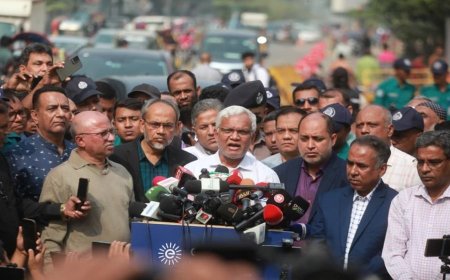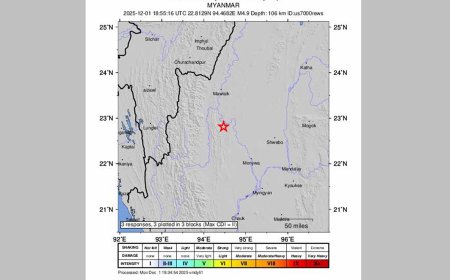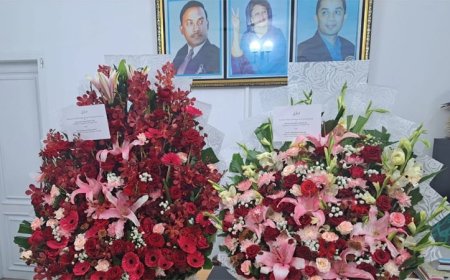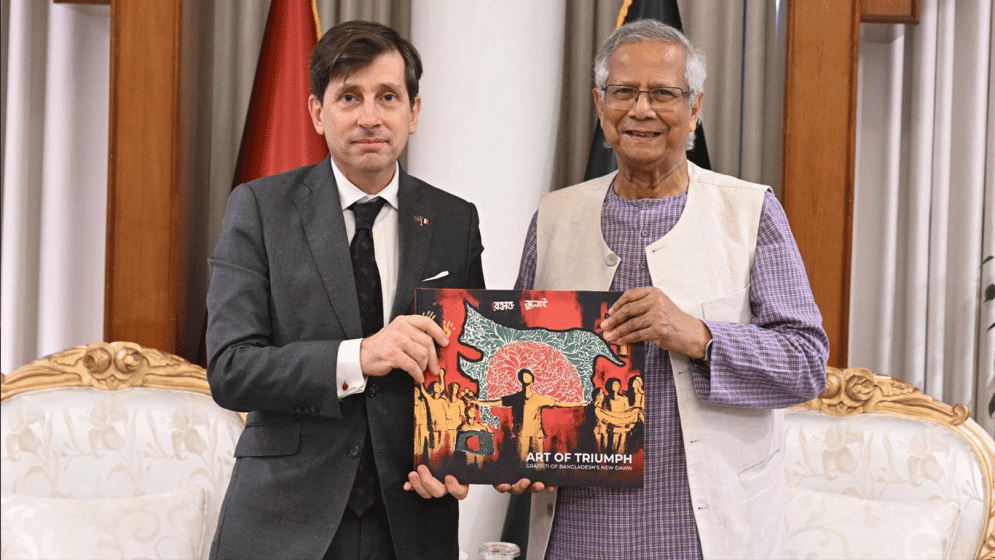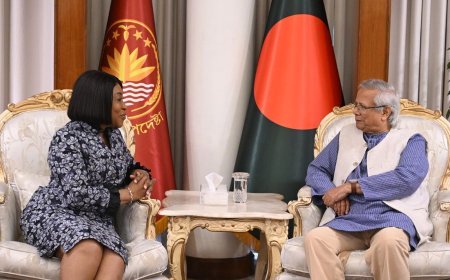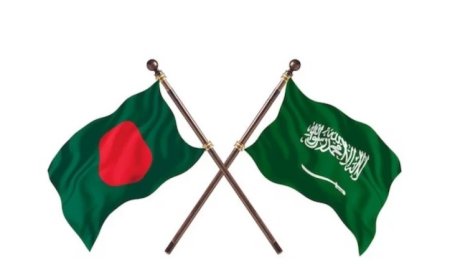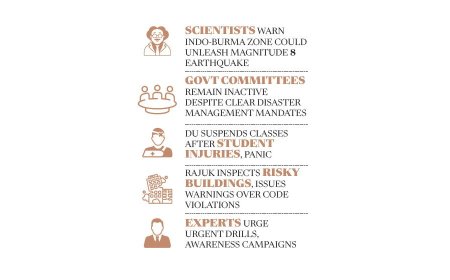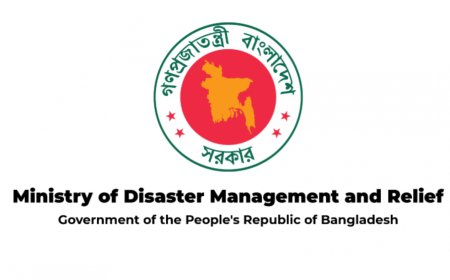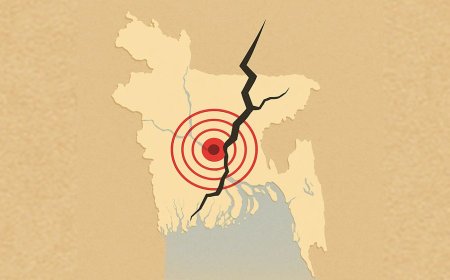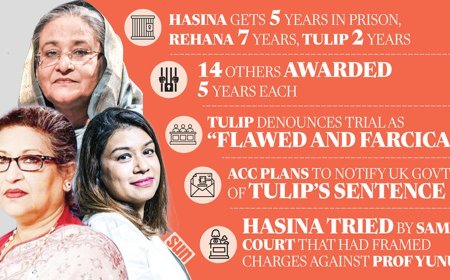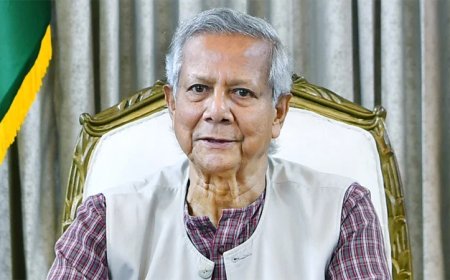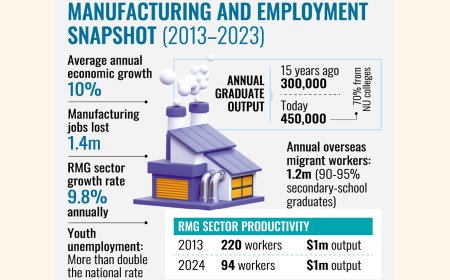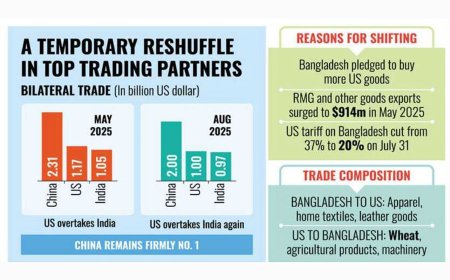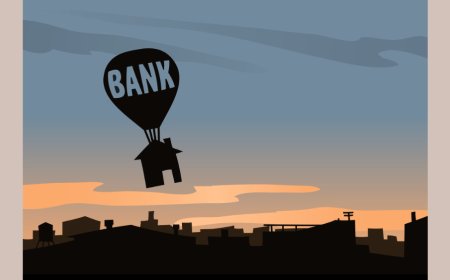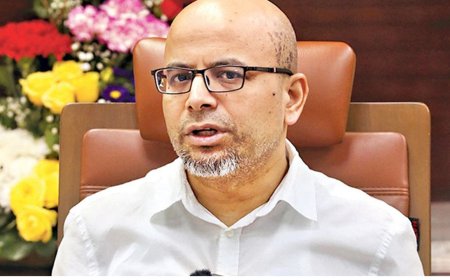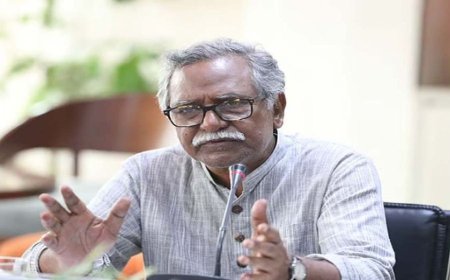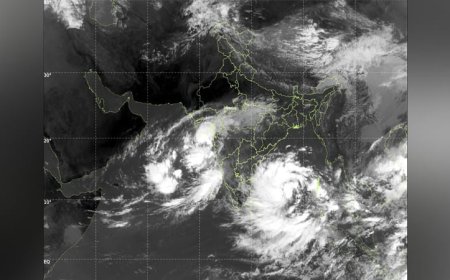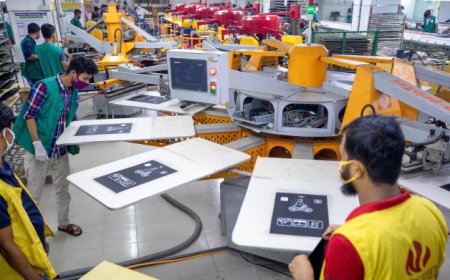Rice shortage unlikely this year as supply remains stable and stock levels strong
At present, government rice stocks amount to 15.21 lakh metric tonnes.
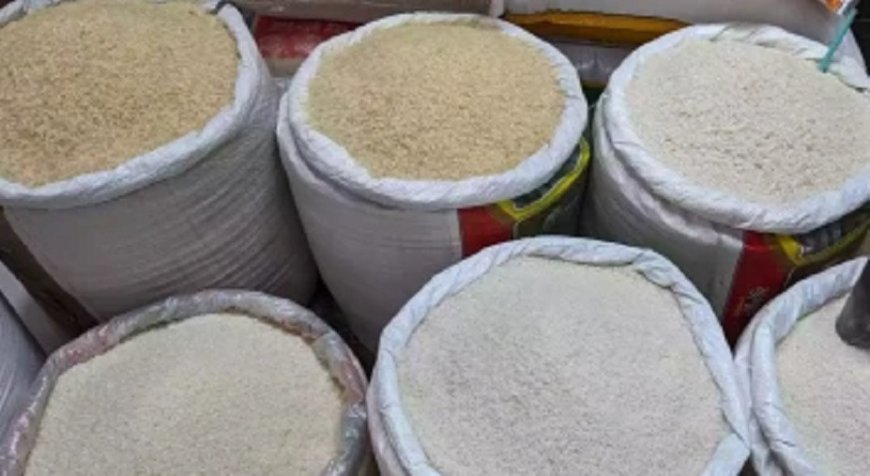
Bangladesh is not expected to face any rice shortage during the 2025–26 fiscal year, as projected demand and supply appear well-balanced, according to an official document.
Thanks to robust procurement during the Boro season and a forward-looking import strategy, government stock levels are strong and sufficient to meet the annual requirement of 41.73 lakh metric tonnes. This includes allocations for safety reserves and subsidised food distribution.
Of the total demand, 31.23 lakh MT is designated for distribution, while 10.50 lakh MT is reserved as a strategic buffer.
As of now, the government holds 15.21 lakh MT of rice in stock, resulting in a net requirement of 26.52 lakh MT for the rest of the fiscal year.
The document notes that a record volume of rice was procured during the current Boro season. Between April and June 2025, 10.84 lakh MT was acquired.
An estimated 13.78 lakh MT is scheduled for distribution between July and November 2025, which would bring government stocks down to 8.54 lakh MT by November.
The Aman season generally presents challenges, such as flooding and comparatively lower yields, leading to a smaller marketable surplus than the Boro harvest.
Over the past five Aman seasons, the government procured an annual average of 28,000 MT of paddy and 4.59 lakh MT of rice. In the 2024–25 Aman season, it secured 26,700 MT of paddy and 5.19 lakh MT of rice—equivalent to 5.37 lakh MT in processed rice.
From December 2025 to March 2026, a further 8.83 lakh MT of rice is expected to be distributed. This year, under the subsidised food programme, 55 lakh families—up from 50 lakh last year—will each receive 30 kilograms of rice per month at Tk 15 per kg during six months: August, September, October, November, February, and March.
The 2025–26 food budget allows for importing 9 lakh MT of rice and procuring 22.29 lakh MT domestically. Of the 26.52 lakh MT net requirement, 22.29 lakh MT will come from local sources.
To bridge the remaining 4.23 lakh MT gap, the government has already decided to import 4 lakh MT as a precaution ahead of the flood-prone Aman season.
This decision was finalised on July 15 during a Food Planning and Monitoring Committee meeting chaired by Finance Adviser Dr. Salehuddin Ahmed at the Bangladesh Secretariat.
Briefing reporters after the meeting, Food Adviser Ali Imam Majumder said the decision is aimed at managing potential risks from seasonal floods.
He also reported that the government has already procured 3.76 lakh MT of Boro paddy—exceeding the 3.50 lakh MT target—and collected 9.50 lakh MT of rice out of a 14 lakh MT goal.
Over the past five years, Bangladesh has followed a cautious and adaptive approach to rice stock management, considering fluctuating weather conditions, domestic harvests, and international market trends.
Official data show that rice stock levels have typically remained within a 10 to 15 lakh MT range, influenced by the success of the Boro and Aman harvests and emergency imports when needed.
During 2020–21 and 2021–22, stockpiles temporarily dipped due to flooding and disruptions from the COVID-19 pandemic. In response, the government ramped up imports and increased local procurement.
Stocks rebounded in 2022–23 and 2023–24 as favorable weather conditions boosted domestic production and allowed the government to meet higher procurement targets.
The 2025–26 fiscal year began with 15.21 lakh MT in stock—one of the highest opening figures in recent memory.
To maintain food security and market stability, the government has consistently procured 20–22 lakh MT of rice annually from local farmers, while supplementing with strategic imports during lean periods.
This stocking strategy also underpins the government’s food assistance programmes for vulnerable populations during key months.
What's Your Reaction?









